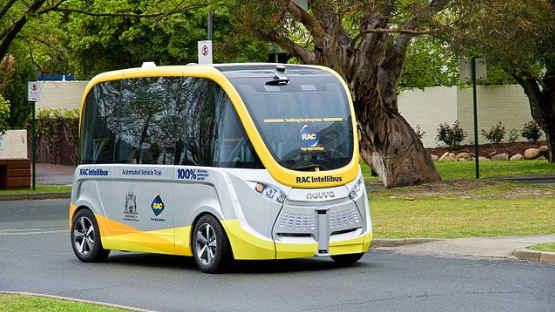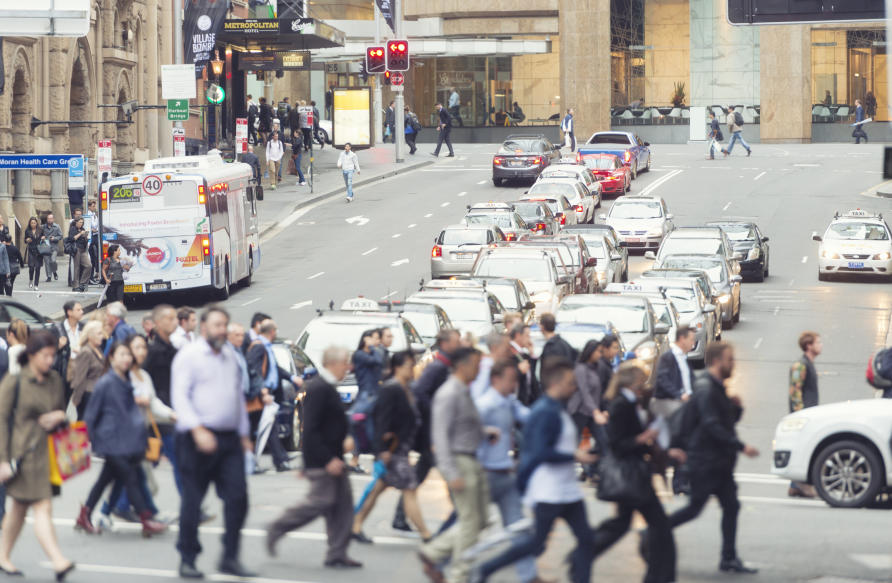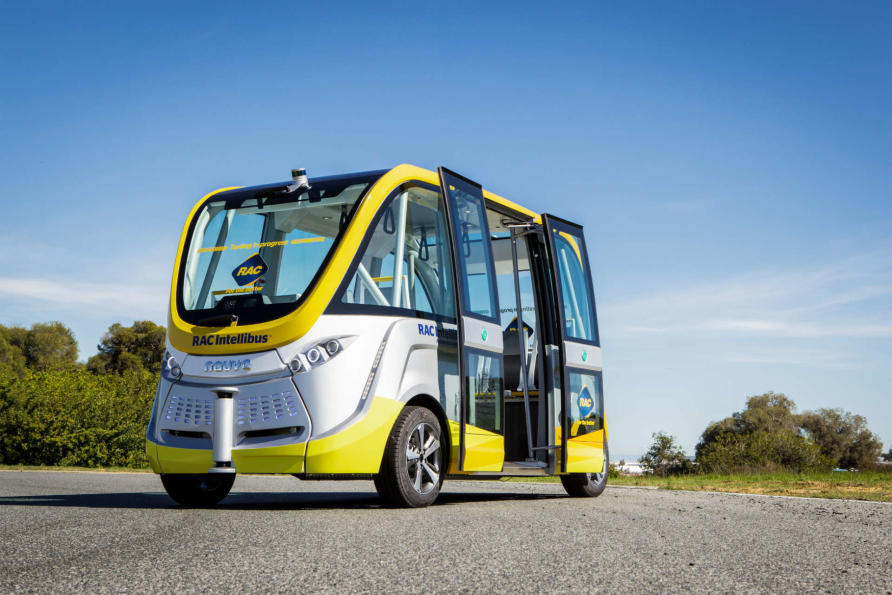Giving driverless vehicles the human touch

When you’re about to cross a road and see an approaching car or bus, there’s usually a brief moment of interaction.
That short exchange lets you know whether it’s safe to cross or not. You might make eye contact with the driver and there may also be a subtle hand signal, as they indicate you can cross safely.

It’s this kind of human interaction that artificial intelligence needs to replicate, as part of the move towards driverless roads.
Later this month, the world’s pre-eminent experts on driverless vehicle technology will meet at the 2018 International Driverless Vehicle Summit in Adelaide.
When these experts met in 2017, they demonstrated driverless buses that could safely navigate without any human interaction – no human driver, no steering wheel. These buses are now being trialled on the South Perth Promenade.
They are equipped with sensors that produce real-time situation-awareness, so when the bus senses any obstacle in its pre-computed shortest route, it will try to sidestep it or slow down and stop.
So when curious children step on to the street just to see the driverless bus stopping, it does just that.
However, this risk-averse programming is also slowing driverless vehicles down. If every car on the road stopped at any potential obstacle, our already jam-packed roads would be at a standstill.
At the University of Melbourne, we are working on ways to keep driverless traffic flowing and safe, by simulating the behaviour and unwritten rules pedestrians and drivers use to negotiate traffic.
But translating these very human exchanges into the technology that powers driverless vehicles is no easy task.

Seeing eye to eye
Part of our research looks at how pedestrians engage with drivers when approaching vehicles. We are studying what the rules of engagement are, and which ones can be translated into an active negotiation between driverless vehicles and pedestrians.
Our conceptual negotiation framework describes how negotiation cues are exchanged and processed between parties to speed up traffic flow.
The communication channels are well known – gestures, gaze, headlights, indicators or honking a horn. But the language is ambiguous and it’s not universal. Is a pedestrian waving towards a driverless vehicle indicating an intention to cross the road, or an intention to let the vehicle pass first?
A further complication is implicit social rules and cultural differences. Compare the relatively conservative road behaviour in Australia, for example, to the behaviour of road users in India.
Even the formalised hand signals used by traffic control officers are not applied worldwide.
After you or after me?
Our next step is to develop a set of social rules that guide the behaviour of driverless vehicles in a traffic simulation and enable them to engage with pedestrians in a human-like manner.
For example, pedestrians tend to yield for a queue of vehicles, but they are less likely to do this for an approaching individual vehicle. Similarly, vehicles tend to give way to larger groups of pedestrians.
We also know that the longer an individual waits, the more they feel entitled to the right of way.

In our traffic simulation, an approaching vehicle interprets the signals received from a pedestrian every second. It weighs these with the social rules and assesses the margins for further negotiations, before indicating behaviourally its intentions (by, for example light or text indicators) to allow a pedestrian to cross or to pass first.
Accounting for human nature
Pedestrians however, being human, have an individual attitude to safety in real traffic. This makes it difficult to predict their behaviour and we need to take more care modelling their behaviour in a simulation. Iit’s an ongoing area of research for us.
In real traffic, pedestrians perceive the safe gap differently – behavioural psychology research supports this. So, in addition to social rules, our simulation is also considering a variety of pedestrian temperaments – those that concede faster to vehicles and those who are less likely to give way.
We are also considering other factors that influence pedestrian behaviours. For example, pedestrians aren’t willing to wait for long, increasing their tendency to take risks when crossing.
The different human risk-taking behaviours are mapped in our simulation, allowing us to study negotiation processes with risk-averse and risk-taking pedestrians, and to investigate their impact on traffic negotiations.
Towards a driverless future…
But the negotiation never puts a party at risk. If it fails to come to an agreement before the vehicle leaves the safe distance, or if the vehicle is unsure about the agreement, it concedes. Until then, the vehicle acts like an equal partner.
Our simulations show that traffic flow with driverless vehicles becomes significantly smoother when vehicles have the human-like intelligence to negotiate with pedestrians – the equivalent of that eye contact with a driver, or the hand signal to wave a pedestrian on.
It is initiatives like these that promise a significant step forward in driverless vehicles becoming an accepted feature of future traffic on our roads.
The 3rd International Driverless Vehicle Summit is from 31st October to 2nd November 2018 at Adelaide Convention Centre, Adelaide, South Australia.